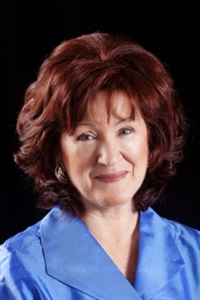Information
CC19 Symposium 02 - Introduction to 2 Models - Sue Johnson, EdD; Stan Tatkin, PsyD, LMFT
Original Program Date :
Length: 55:52
Description: This dialogue between EFT and PACT highlights two distinct, research-informed approaches to couple therapy. Johnson presents EFT’s focus on attachment security, corrective emotional experiences, and systemic change. Tatkin emphasizes PACT’s attention to arousal regulation and real-time interaction. Together, they underscore the importance of attuned, principle-based interventions for lasting relational transformation.
Syllabus Description: Each faculty member will present basic principles for their model to help the audience understand the strengths of the model: EFT and PACT.
The essential features of EFT- a client centered alliance, a focus on emotion regulation and balance, the creation of self and system change, and the key interventions and corrective moments that have been shown to lead to predictable lasting change in love.
PACT was developed out of exciting, cutting-edge research in three areas: developmental neuroscience, biology of human arousal, and attachment theory. PACT focuses strongly on moment-to-moment shifts in the face, body, and voice, and asks partners to pay close attention to these while they interact. The goal is secure functioning.
Educational Objectives:
- Outline the key features of EFT that have been shown to lead to successful outcome.
- Describe at least three principles of secure functioning relationship.
*Sessions may be edited for content and to preserve confidentiality*
Sue Johnson, EdD

Dr. Sue Johnson is an author, clinical psychologist, researcher, professor, popular presenter and speaker and a leading innovator in the field of couple therapy and adult attachment. Sue is the primary developer of Emotionally Focused Couples and Family Therapy (EFT), which has demonstrated its effectiveness in over 30 years of peer-reviewed clinical research.
Sue Johnson is founding Director of the International Centre for Excellence in Emotionally Focused Therapy and Distinguished Research Professor at Alliant University in San Diego, California, as well as Professor Emeritus, Clinical Psychology, at the University of Ottawa, Canada.
Stan Tatkin, PsyD, MFT

Stan Tatkin, PsyD, MFT, is a clinician, researcher, teacher, and developer of A Psychobiological Approach to Couple Therapy (PACT®). He has a clinical practice in Calabasas, CA, where he has specialized for the last 15 years in working with couples and individuals who wish to be in relationships. He and his wife, Tracey Boldemann-Tatkin, developed the PACT Institute for the purpose of training other psychotherapists to use this method in their clinical practice.

